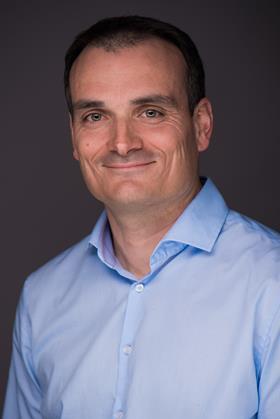It’s an understatement to say that Free Ad-Supported Streaming TV (FAST) was a hot topic at this year’s IBC. The theme of FAST channels and services popped up in numerous conversations and presentations around the show floor.
Indeed, Baskar Subramanian, co-founder and CEO of Amagi, has declared that FAST will be the future of the free viewing experience, “because it offers great content through a variety of channels, for free, through precision advertising and without wasting time searching for content on a video on demand (VOD) subscription platform model”.

According to Subramanian, because FAST is a linear or ‘scheduled’ viewing model, “it will also solve the paradox of choice viewers currently experience by having too many choices on VOD models, which results in viewers spending too much time browsing for content to watch.” In his view, sport will be the next biggest growth area for the FAST market.
Amagi recently released the fifth edition of its Global FAST Report. Key findings include that connected TV (CTV) is a major catalyst for FAST, with hours of viewing (HOV) on CTV devices increasing 83% year-on-year and ad impressions by 127%.
In addition, the report found that the cost of living crisis is driving consumers to unsubscribe from paid-for, SVOD services and turn to free advertising-based video on demand (AVOD). Globally, AVOD ad revenues are expected to hit $56 billion by 2024, the report said. In terms of the type of content, news is the top performer worldwide, attracting 35% of ad impressions and 30% of HOV.
Meanwhile, Red Bee Media, Nowtilus and Equativ (formerly Smart) have just announce the launch of their jointly created FAST offering, providing a B2B solution for implementing and managing FAST channels. The first customer is High View, an independent media company based in Austria and Germany that distributes its content on LG Smart TVs through LG Channels, LG’s own FAST platform.
Juliet Gauthier, strategic product manager at Red Bee Media, noted that FAST ticks lots of boxes for the viewer as it’s “free, easy, and can be watched flexibly across devices”. For a rights holder or content owner, FAST is “nowhere near as complex to launch as a broadcast channel or OTT service”, she said.
Gauthier added that people are still learning about FAST “and determining if it’s the real deal or a flash in the pan. I think it’s here to stay, mainly because I see it as a logical progression of linear TV viewing. At its simplest, FAST takes the lean-back linear viewing experience, familiar to everyone who grew up with broadcast TV and makes it available in a more flexible streaming format. It is no wonder that it’s taking off. I am just surprised it hasn’t happened sooner.”
FAST take-up
The optimistic outlook for FAST offered by Gauthier and Subramanian is shared broadly throughout the industry. Bart Lozia, CEO of Better Software Group (BSG) said his company believes “the future of TV is free and ad-supported and it’s the biggest addition to the industry since introduction of AVOD”.

Marco Inzaghi, VP and head of business development at MainStreaming, said the interest in FAST services “is yet another confirmation that live streaming will grow faster than expected in the next six to twelve months”. He pointed to the company’s edge video delivery services “that guarantee capacity and quality when and where needed”.

David Thompson, chief product officer at Veset, observed that the pandemic and ensuing credit crunch “have certainly led consumers to re-evaluate the amount they pay for access to subscription platforms. This is leading to a wider acceptance generally of ad-supported content with many people opting to reduce paid services”.
Thompson cites recent statistics from Omdia that suggest 60% of Netflix subscribers will be on the ad-supported tier by 2027. “I believe we will see the same trend with more viewers attracted to FAST platforms and we will increasingly see a much wider range of ad-supported channels, from those delivered by small niche content providers to the big players. FAST channels are being used by some to drive subscriptions to more premium content and by others to resurface and monetise archived content,” he added.
Rick Young, SVP and head of global products at LTN, also said FAST “is an attractive proposition for consumers — the explosion of on-demand services has led to a sense of ‘choice fatigue’ for many. So audiences are increasingly turning towards the ‘lean-back’ viewing experience that traditional linear television offers. And faced with heightened living costs and squeezed home budgets, consumers are looking to save on their video subscription costs”.

According to Young, market conditions and technology shifts “mean that FAST is on track to become one of the de-facto viewing methods for many international consumers”.
Keys to success
Content Everywhere exhibitors nevertheless also offer words of caution and advice if FAST is to fulfil its early promise.
Thompson from Veset added that as the market continues to evolve, “FAST channels need to be able to launch quickly, and without huge upfront costs and infrastructure requirements, enabling providers to experiment and scale depending on response and engagement.”
Vinayak Shrivastav, CEO and co-founder of Magnifi, noted that FAST as a concept has become a strategic marketing solution, with over 1400 channels in the United States alone. “The challenge here is to have a focused and smart advertising strategy to capture this diverse audience pool and ensure that your campaigns are reaching your TA in the most effective way,” Shrivastav said.
Michael Lantz, CEO at Accedo, agreed that FAST channels will become increasingly important in the linear space for reaching a larger demographic, but pointed to certain challenges.
“As with any ad-supported approach, they are best suited to particular types of channel and content. For example, channels airing those shows with longevity and a large number of seasons are more likely to sit well in this type of environment, as consumers will be keen to dip back in for the next episode. However, if discoverability was an issue with SVOD services, we’ll see the explosion of FAST channels leading to even more challenges. Non-exclusive syndicated content may be available on multiple platforms, the customer retention challenges will likely be higher than before and advertisement fulfilment and revenue maximisation will continue to be an ongoing focus for FAST providers,” he said.
Meanwhile Tom Dvorak, co-founder and CCO at XroadMedia, indicated that there is still a long way to go to streamline the FAST user experience and modernise the customer journey.

“The industry has some challenges in overcoming some of the obstacles around personalisation and content discovery. As the ad tech for FAST continues to develop at an incredible pace, platforms and content owners need to look for new innovations and technologies to continue to differentiate themselves from their competitors that could provide that edge, especially in personalisation,” Dvorak said.
Venugopal Iyengar, deputy COO digital at Planetcast International, noted that in top-tier established markets such as North America, the biggest media brands are drawing in FAST viewers at a healthy rate, and the advertising dollars are rolling in.

“From a broader global perspective, FAST is certainly on the right track, but we still have some way to go. There’s considerable potential across a range of growing international markets, but media companies need to learn how to get the right content to the right audiences on the right platforms. That means getting to know your audience better, understanding where they are watching and identifying the content that hits the mark. Doing that isn’t always straightforward, requiring experimentation phases, some patience, and a data-driven, partner-led technology approach,” Iyengar observed.
Iyengar added: “Before we see FAST take off as a truly global ‘business pillar’ and a ‘do-or-die’ for every media company, brands need to identify ways to find their audiences more effectively. This is particularly important for smaller organisations and new entrants without the weight and capital of larger, more established players.”
For FAST to succeed, said Amagi’s Subramanian, “the key is to have enough compelling content which also means having an aggregator to replace having multiple platforms, so that viewers can have all their content in one place.”
LTN’s Young also said brands would miss out on a considerable revenue opportunity and a powerful route to audience growth if they don’t bring fresh, local, and live content to FAST platforms.
“Localised, relevant, and live content experiences are crucial ingredients for FAST success. Live sports, news, and events draw viewers in and keep them tuned in. Geographically tailored news coverage, regional sports, weather, and cultural programming bolsters audience engagement and strengthens platform loyalty,” Young said.

According to Marc Baillavoine, Senior Director of Product Management at Synamedia, the reality is that the “existing FAST solutions have a YouTube-like business model that prevents you from properly monetising your successful content”.
“We believe the market will benefit from a more granular approach, where the FAST workflow is broken down into smaller pieces that allow the content owner to regain control of how they monetise their assets,” Baillavoine concluded.
























1 Readers' comment